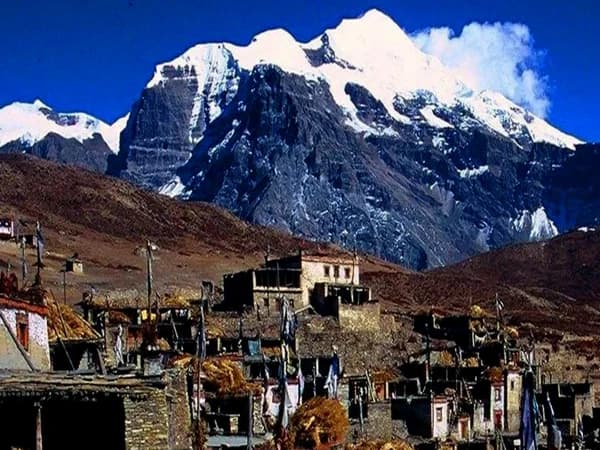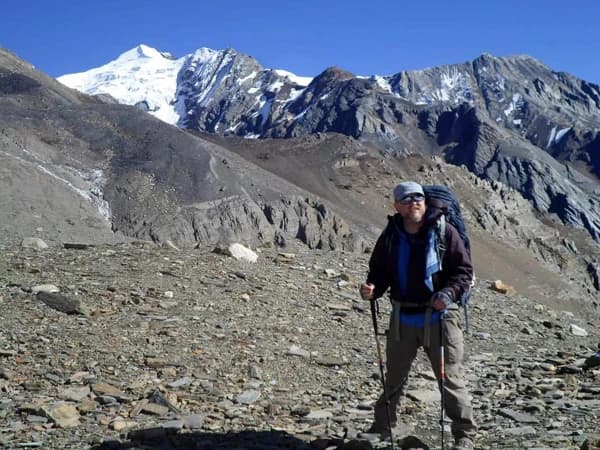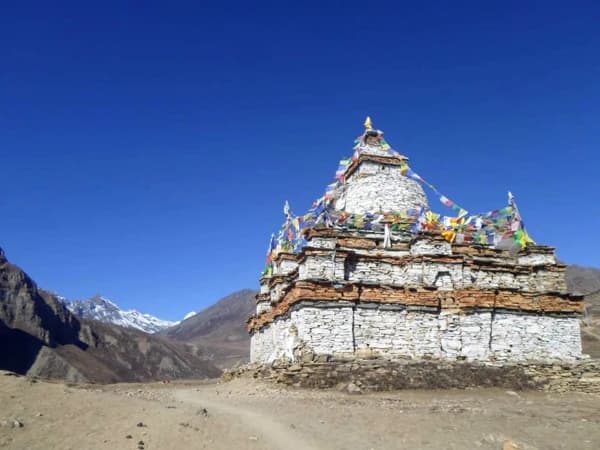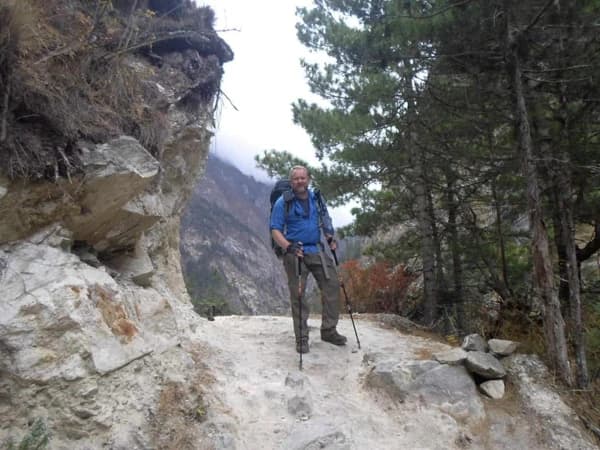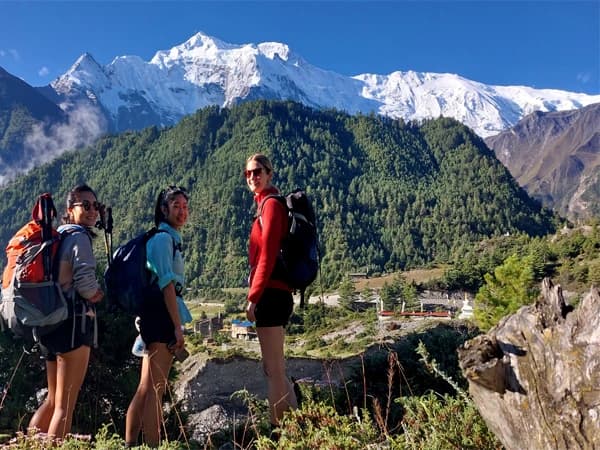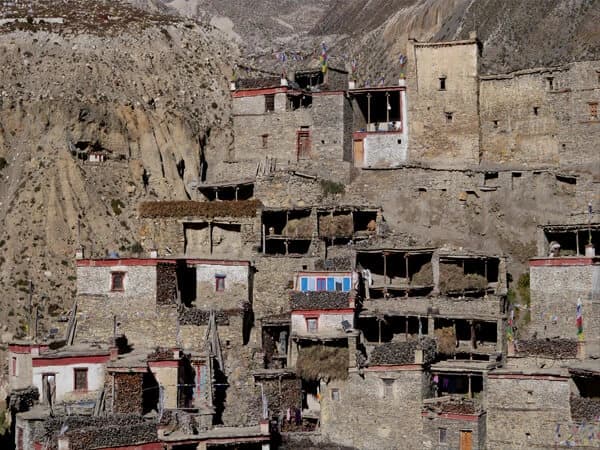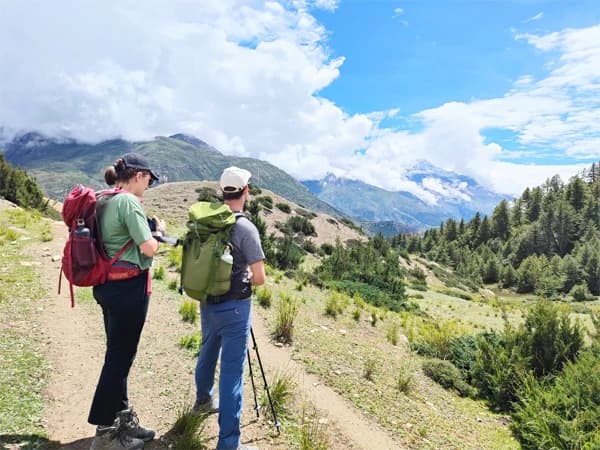Nar Phu Valley Trek- 13 Days Package!
The Nar Phu Valley Trek is a recently opened trekking trail, established in 2003, located in the Annapurna Conservation Area of Nepal. This trek offers an incredible journey that allows you to discover an age-old way of life. The remote and isolated Nar Phu Valley showcases the rich Tibetan culture and lifestyle, featuring a trans-Himalayan desert landscape, breathtaking cliffs, and ancient monasteries. At lower elevations, you will encounter lush green valleys, while at higher elevations, the terrain becomes rocky and reminiscent of a desert. If you are in search of a tranquil trail with a unique cultural vibe, mysterious landscapes, ancient monasteries, majestic mountains, and rich cultural villages amidst diverse flora and fauna, the Nar Phu Valley is the perfect holiday destination for you in Nepal. Join us for a 13-day Nar Phu Valley Trek package to explore this untouched trail and experience the beauty of this hidden valley like never before. The journey begins with a scenic drive from Kathmandu to Dharapani, where you'll follow the famous Annapurna Circuit trek trail to Koto. From there, you'll leave the Annapurna trail and venture into the Nar Phu Valley, passing through Meta, Phu, and Nar, and crossing the Kang La Pass at an elevation of 5,306 meters. Finally, you will rejoin the Annapurna Circuit trek trail at Manang. From Manang, we will return to Besishahar and eventuallymake our way back to Kathmandu. The off-the-beaten-path Nar Phu Trek is an ideal choice for nature and culture seekers. Book Nar Phu Trek with Himalayan Trekking Path Pvt. Ltd for the best service at a low cost and an authentic mountain holiday.
Highlights of Nar Phu Valley Trek
- Newly opened Trekking destination of Nepal
- Isolated and forbidden off the beaten path trekking route
- Explore the rich flora and fauna of the Annapurna Conservation Area.
- Experience the beauty of the lush green valley and its diverse flora and fauna
- Witness the majestic waterfall and pass through the Trishuli and Marsyangdi river valleys
- Encounter the breathtaking Annapurna mountain ranges
- Immerse yourself in the ancient Tibetan culture, art, and architecture
- Discover the hidden gems of the ancient Tibetan Nar and Phu villages
- Reach the summit of Kang La Pass at an altitude of 5322m, the highest point of the Trek
- Explore the charming village of Manang
- Indulge in the picturesque views of the lush green valley throughout the trek
- Start and end the trek in Kathmandu
Nar Phu Valley Trek Itinerary:
The Nar Phu Valley Trek presents an opportunity to explore the hidden gems of the Kathmandu Valley before embarking on the thrilling Narphu Valley Trek. Combining a visit to the Kathmandu Valley with your trekking journey ensures a comprehensive experience of the Nar Phu Valley. Immerse yourself in the captivating beauty of charming villages, verdant valleys, bustling markets, and serene river valleys as you embark on a scenic bus journey of 6 to 7 hours to Besishahar, where you will spend your first night outside Kathmandu. The next day, a 3/4 hour Jeep ride will take you to Dharapani, a significant stop along the renowned Annapurna Circuit Trekking route. Upon reaching Dharapani, the gateway to the Nar Phu Valley Jounray, and the famous Annapurna Circuit trek, you will have the opportunity to spend a night in this breathtaking location before proceeding to Koto. Your unforgettable adventure through this enchanting region will commence from Dharapani, as you embark on a foot journey to Koto Village (2600m), where you will witness the majestic Annapurna range and encounter diverse flora and fauna along the trail.
The Nar Phu Valley Trek commences from Koto and progresses towards Meta village, offering a unique and less-traveled path. This scenic route winds through a verdant valley, providing panoramic views of the high-altitude and sub-alpine terrain. The area is teeming with diverse wildlife, such as snow leopards and blue sheep. Throughout the trek, you will be treated to awe-inspiring sights of snow-capped peaks, enhancing the beauty of the surroundings. The trail also passes by isolated settlements, impressive rock formations, icy glaciers, narrow gorges, enchanting forests, colorful prayer stones, monasteries, and gompas. Interact with the friendly locals and delve into their vibrant ethnic heritage, experiencing their warm hospitality along the way.
Nar Phu Valley Trail leaving Meta Village behind and heading continue your journey to Phu Gaon, an ancient Tibetan village that offers a glimpse into the rich Tibetan culture and century-old lifestyle. The trail to Phu Gaon is a long and off-the-beaten-path track, but it rewards you with breathtaking views of the majestic Annapurna Peaks. As you make your way, you will pass through Kyang village, where only a few people reside. Here, the lush green valley gradually transforms into a dry landscape.
Phu Village, situated at an elevation of 4110m above sea level, is a stunning village and one of the highlights of the Nar Phu Valley Trekking. Take your time to explore the monastery and immerse yourself in the local culture. Wander through the narrow alleyways of the village or embark on a hike to the base camp of Himlung Himal. Phu itself is a fascinating village, and spending a day with the villagers as they engage in activities like spinning yak and sheep wool, grinding mustard seeds for oil, and carrying out their daily chores is a rewarding experience.
For those seeking an extra challenge, the hike to Himlung Himal Base Camp takes you through a glacial valley. This 7,125-meter peak was recently opened for climbing, adding to the allure of the trail. Along the way, you might spot herds of blue sheep gracefully navigating the cliffs. We will return to Nar Phedi from Phu and continue our journey to Nar Village, which is another well-known village in the Nar Phu Valley Trek. We will follow a challenging trail along the Phu Khola and Lase Khola valleys, passing by monasteries and traversing through arid terrain. Don't miss the opportunity to explore the hidden gem of Nar and prepare yourself for the ascent to the majestic Kang La, towering at an impressive altitude of 5306m above sea level. Once we cross the pass, we will descend to Nawal (3660m), enjoying breathtaking mountain views along the way as we traverse through the moraine. From there, we will make our way to the picturesque Lush Green Valley and spend some time in Manang and Pisang before finally returning to Kathmandu via Dharapani and Besishahar.
Best Time for Nar Phu Valley Trek
The Nar Phu Valley Trekking experience is best enjoyed during specific seasons. Autumn (September to November) and Spring (March to May) are considered the ideal times for this trek due to pleasant temperatures, stable weather conditions, minimal precipitation, and clear skies. Temperatures typically range from -5 to 25 degrees during these seasons. Conversely, the Winter season (December to February) brings extremely cold weather in the high altitudes, heavy snowfall, storms, and poor weather conditions, with temperatures ranging from -10 to 10 degrees. The rainy season (June and July) is also not recommended due to heavy rainfall, floods, landslides, and poor visibility, with temperatures ranging from 5 to 33 degrees. While it is possible to trek in Nar Phu Valley during December, February, and August, it is advisable to avoid the rainy and winter seasons for a more enjoyable experience.
Nar Phu Valley Trek Packing List
The information provided is essential for planning the incredible Nar Phu Valley Trek, which takes you through the stunning Tibetan cultural village and a mesmerizing rocky trail. The trek begins at a lower elevation and gradually ascends to the Kang La pass, reaching an altitude of 5322m. As you traverse through different climates during the journey, it is crucial to prepare a comprehensive packing list suitable for the marvelous Nar Phu Valley Trek. To ensure a comfortable trekking experience, it is recommended to include the following items in your packing list.
- Sleeping bag and down jacket suitable for temperatures around -15 degrees Celsius.
- Waterproof hiking boots for sturdy and reliable footwear.
- Light sandals or plimsolls for wearing in the lodge
- Towels, shampoo, and toiletries for personal hygiene.
- Trekking pole and headlamp for assistance during the trek.
- A camel bag or water bottle to stay hydrated throughout the journey.
- Iodine water purification tablets or sterilizer pens to ensure safe drinking water.
- Several large plastic bags, one for storing smelly clothes and another for keeping items dry.
- Windbreaker jacket and fleece coat to protect against cold and windy conditions
- Warm woolen beanie, sun hat, and multiple pairs of socks for adequate head and foot protection.
- Long and short trekking pants in various quantities for flexibility in different weather conditions.
- Thin thermal under trousers for added warmth.
- Several quick-dry t-shirts, gloves, sunglasses, and sun cream for sun protection.
- A duffel bag for your equipment, which will be carried by a porter.
- A day bag with a capacity of 30 liters to carry your valuable belongings.
Acute Mountain Sickness and Prevention
Acute Mountain Sickness (AMS) is a common risk during the Nar Phu Valley trek due to rapid altitude gain. To prevent AMS, ascend gradually and allow proper acclimatization, especially above 2,500 meters. Stay well-hydrated and avoid alcohol, smoking, and caffeine. Walk at a steady pace, avoid overexertion, and include rest days in your itinerary. Sleep at a lower altitude than the highest point reached during the day. Eat high-energy foods, stay warm, and consider taking Diamox (acetazolamide) after consulting a doctor. Monitor symptoms like headache, nausea, or dizziness and descend immediately if they worsen. Your safety comes first. Here are the key factors to combat the AMS.
- Ensure adequate hydration by consuming approximately 3 to 4 liters of water daily.
- Take leisurely walks and remember to take regular breaks every 30 minutes during your trek
- It is important to adhere to the instructions provided by your guide and follow the planned itinerary.
- Avoid rushing and unnecessary worry during your trip.
- Consume sufficient food to replenish your stamina levels.
- Take pleasure in the beauty of nature and the surrounding scenery.
- Refraining from consuming alcohol and smoking at altitudes above 4000m is crucial for maintaining good health and preventing altitude sickness.
How difficult is the Nar Phu Trek?
The Nar Phu Valley trail offers a rustic and less-explored experience, requiring Trekkers to cover a long distance of approximately 15 to 20 km per day. The trail consists of both uphill and downhill sections, traversing rugged terrain. In terms of its location, the trail passes through the captivating Nar Phu Valley, offering a unique and immersive experience. The trek is categorized as a moderately difficult level, starting from Koto (2600m) and encompassing the challenging Kang La Pass (5240m). Overnight stays in Nar and Phu, both situated above 4000m, provide an opportunity to acclimatize and soak in the breathtaking surroundings. Embarking on this journey necessitates good health, physical fitness, and appropriate gear to ensure a successful and enjoyable experience.
Nar Phu Valley Trekking Permit Fees
The Nar Phu Valley Trek falls within a restricted area, requiring multiple permits for entry. These include the Annapurna Conservation Area Permit (ACAP), the Restricted Area Permit (RAP), and the TIMS (Trekkers’ Information Management System) Card. Due to its restricted status, trekkers must be accompanied by a licensed guide and travel in a group of at least two people. Solo travelers must pay for an additional “ghost permit” to meet the minimum group requirement. To obtain these permits, you’ll need a valid passport, a passport-size photo, and a photocopy of your passport. Permit costs are detailed below:
- ACAP Permit (Annapurna Conservation Area Project): Rs. 3000 for foreign nationals, (NPR 1,000) for SAARC nationals. Covers unlimited stay across the Annapurna Conservation Area.
- Restricted Area Permit (RAP): Mandatory, issued only via a Nepal-registered trekking agency. Costs USD 75 per person for the first 7 days (December–August) or USD 100 (September–November), plus USD 15 per extra day.
- TIMS Card (Trekker's Information Managment System): Rs. 2000 if extending into the wider Annapurna circuit, otherwise optional.
Nar Phu Valley Trekking Cost for 2025 -2026
The cost of the Nar Phu Valley Trek starts from 800$ to 1200 $ per person. The Cost particularly depends on factors such as group size, services offered, duration, service level, package, and itinerary. If you're looking to travel with a reputable trekking company at a reasonable cost, the Himalayan Trekking Path is an excellent choice. You can find detailed information about the Nar Phu Valley Trek Package, and the cost of the trek is very fair. Traveling in a group generally results in a lower price compared to traveling alone or in a small group. However, if you prefer to travel solo, the Himalayan Trekking Path can accommodate that as well at a reasonable cost. Discover the surprisingly affordable cost of the Nar Phu Valley Trek with us. Here is the breakdown cost of the Nar Phu Valley trek according to the group size below:
- The Cost of the Nar Phu Valley Trekking is USD 1200 for a solo Trekker
- The Cost of the Nar Phu Valley Trekking is USD 900 P/P if you are traveling in a Group of 2-5 Pax
- The Cost of the Nar Phu Valley Trekking is USD 800 P/P if you are traveling in a Group of 6-10 pax

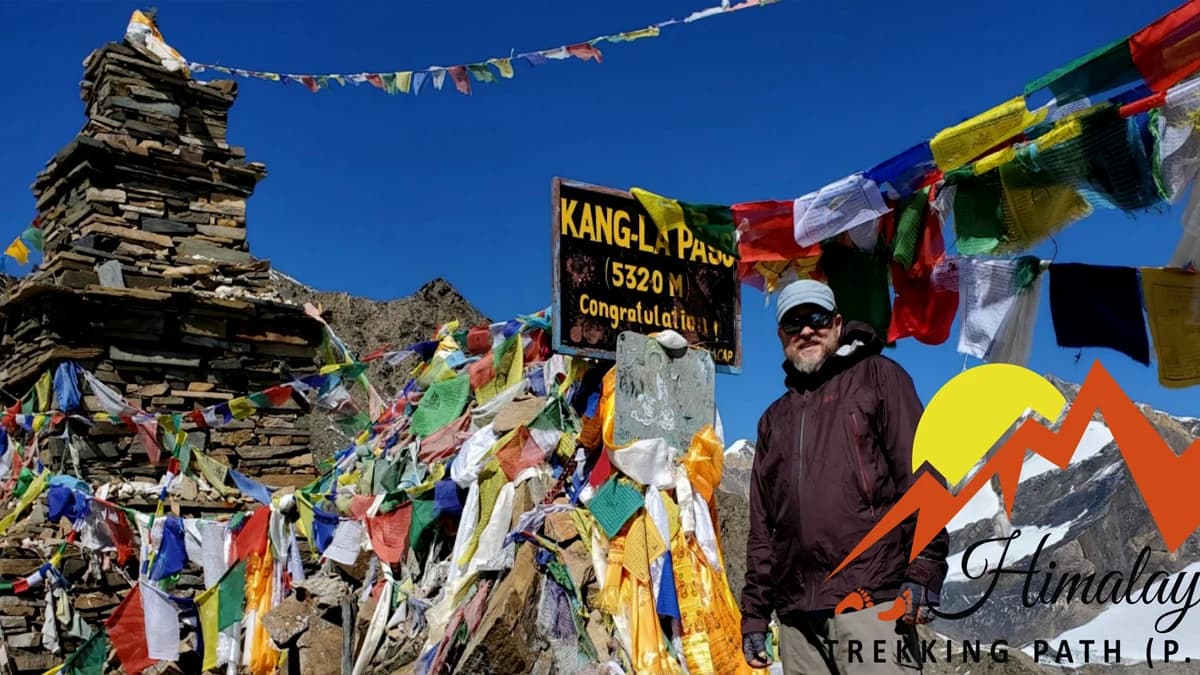
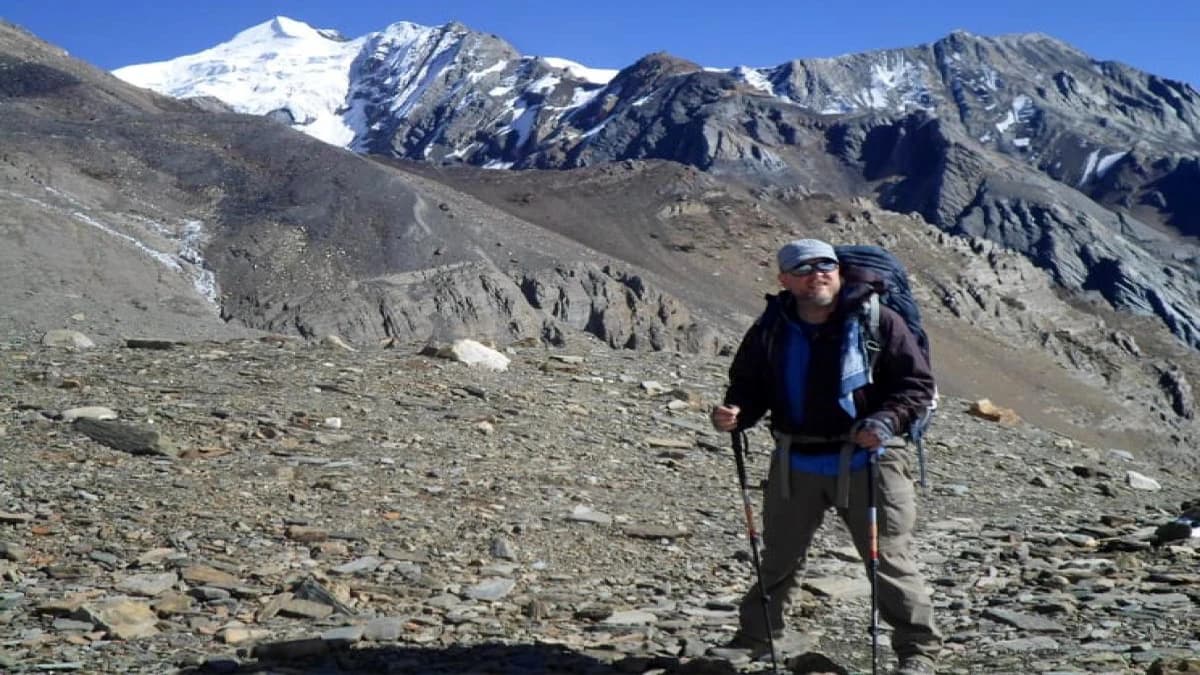
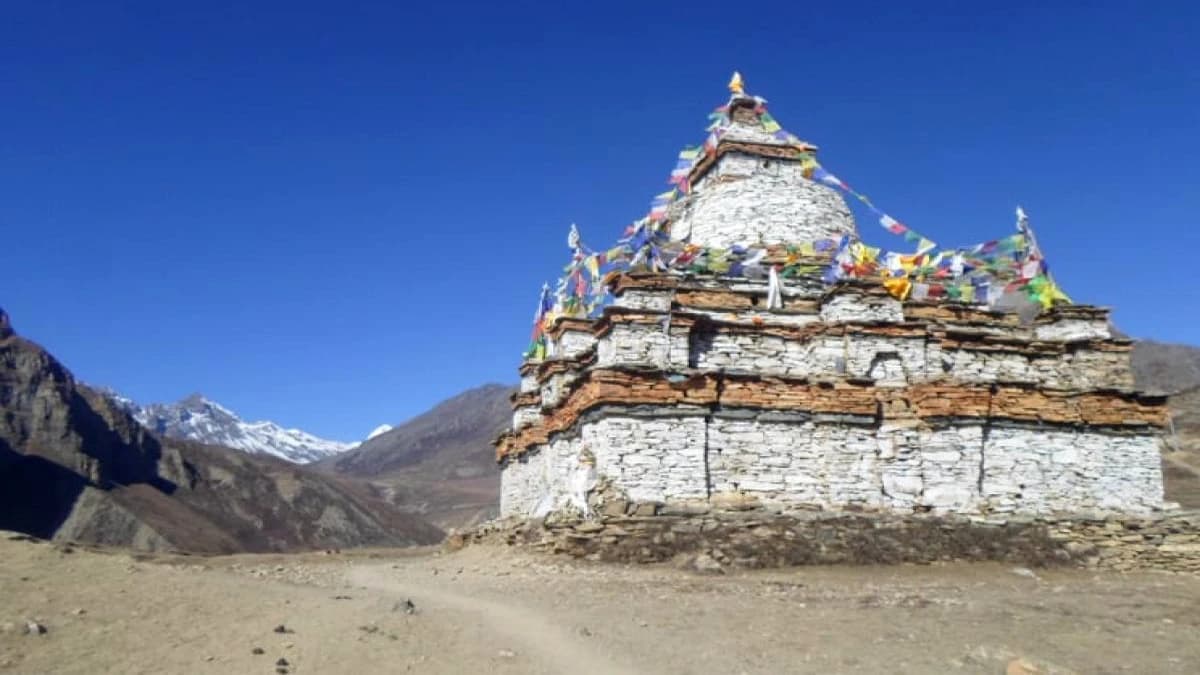
.webp&w=3840&q=75&dpl=dpl_68iekHfQa6LTa1KacmD9d4xc8oHg)
